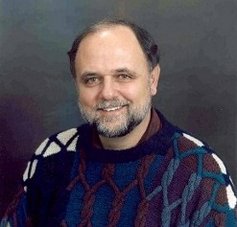Possible Cure For Cancer But You Can't Have It! - video powered by Metacafe
Canadian researchers have developed a new cancer treatment that is an alternative to chemotherapy. "DCA" has undergone some trials on human cancer cells and shows a lot of promise, but not enough to be approved by the FDA. Don't miss the point! If this new drug had a patent, drug companies might be all over it with tons of money to put towards doing research. Profit is the bottom line for them. The difference between DCA and chemotherapy is that DCA kills the cancer cells and not the other healthy cells that are destroyed throughout the body. Chemo is known to weaken your immune system and lower your white blood cell count. This is condition called neutropenia (new-truh-pee-nee-ah) – which can put you at risk for severe infections or treatment interruptions. Click here for a list of possible side effects of chemotherapy and what can be done about them.
In 2002, the Journal of the American Medical Association reported that in the previous year, the average oncologist had made $253,000 of which 75% was profit on chemotherapy drugs administered in his/her office. Yet, surveys of oncologists by the Los Angeles Times and the McGill Cancer Center in Montreal show that from 75% to 91% of oncologists would refuse chemotherapy as a treatment for themselves or their families. Why? Too toxic and not effective. Yet, 75% of cancer patients are urged to take chemo by their oncologists.
The National Cancer Institute published a list in 1971 of the cancers that chemo was most effective with. One of those was Embryonal Testicular Cancer, for which cyclist Lance Armstrong is the poster boy. On the other hand, some doctors want to prescribe chemo for every kind of cancer. The fact is that some types of cancer NEVER responded to chemo or radiation!
What if there was a way to cure cancer without the use of chemotherapy or radiation? No more throwing up and no more hair loss? What if that therapy could be proven to work as well or better than conventional treatments offered by your doctor? Would you want to know about it or would you rather your doctor kept it a secret from you?
A few years back, I ran across a doctor that has been successfully treating many forms of cancer for over 30 years. The curious part is that he does it without chemo or radiation. He uses a non-toxic therapy that does not have the side effects of chemo or radiation. His name is Dr. Stanislaw Burzynski, M.D., Ph.D.

Burzynski's work was reported on positively on the probing network television investigative series 20/20 (ABC-TV, October 22, 1981) and Street Stories (CBS-TV, July 23, 1993), and more recently, ABC-TV's Nightline and CBS This Morning (April and March, 1995, respectively).
Look at the following clip from Fox News. It is Jody's story of how she was diagnosed with inoperable brain cancer. Her chances of survival were almost nil. She went to see Dr. Burzynski and now she has a different ending to her story.
For more information, check out some of his web sites:
Burzynski Research Institute, Inc.
Burzynski Clinic
Burzynski Patient Group
Dr. Burzynski - His Credentials and Biography
Dr Burzynski’s discovery threatens one of the largest and most lucrative industries in the history of mankind, the cancer treatment industry.
- All those radiation machines and doctors who run them
- All those chemotherapy drugs and the doctors who prescribe them
- All those so called studies that just juggle the doses of chemo & radiation
- All those surgeons who have been flailing at cancer for over a 100 years.
Much to the chagrin of the FDA and the cancer industry as a whole, his cancer treatments are now in phase 2 of clinical trials as found on the National Cancer Institute page. In the past, the cancer industry and the FDA have worked to destroy Dr. Burzynski. They went into his office and seized all his records and tried to have him shut down and put in jail. After all, his innovative ideas threatened conventional wisdom and the very cancer industry itself.
When Nicolaus Copernicus proved that the earth was not the center of the universe, he was opposed by conventional wisdom and the Church. Galileo was imprisoned for the rest of his life for agreeing with Copernicus and was accused of grave heresy. Galileo had gotten off lightly. Another Copernican, Giordano Bruno, had been prosecuted in Rome by the same Cardinal Bellarmine and on February 17, 1600, burned at the stake as a heretic.
Dr. Burzynski was vindicated of all charges after a 14 year battle. The courts have now forced the FDA to work with him as clinical trials on his protocol move forward. Here is the chronicle of his story. Click on the following link:
The Burzynski Saga
Dr. Burzynski And The Abuse Of The FDA
"The FDA 'protects' the big drug companies and are subsequently rewarded, and using the government's police powers they attack those who threaten the big drug companies.
People think that the FDA is protecting them. It isn't. What the FDA is doing and what the public thinks it is doing are as different as night and day."
Dr. Herbert Ley Former U.S. FDA Commissioner






 My StumbleUpon Page
My StumbleUpon Page





